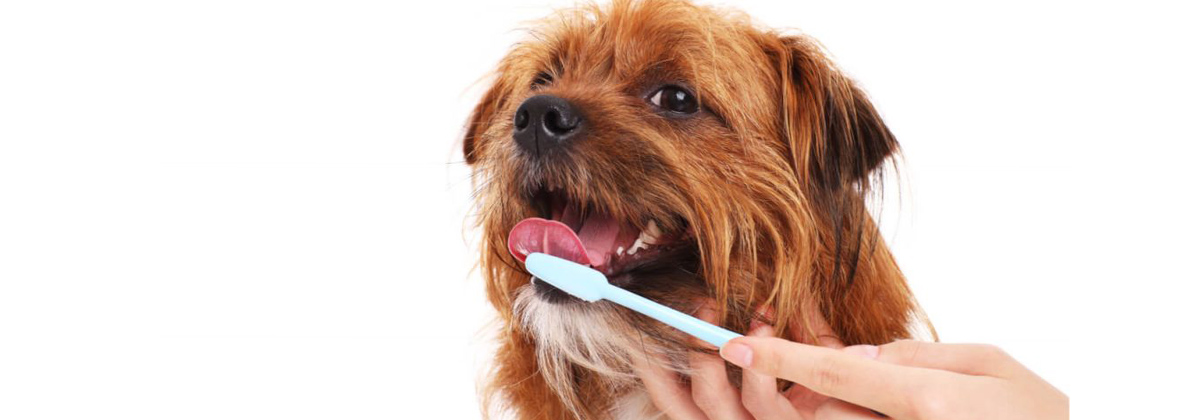06 Jan How to Brush Your Dog’s Teeth (Part 1)
Dogs eat a variety of foods a day. Each of them can get stuck in their teeth and cause discomfort. Oral disease is the most common preventable disease in dogs. That’s why cleaning the dog’s teeth, and mouth are vital. Good health care, including oral care, will extend the life of our pets. Maintaining oral health in dogs isn’t a difficult task at all. If you care for a dog, you’ve probably wondered what a dog’s brushing is. Is there anything like a toothbrush for them? What is the correct way to do this? In this article, we will provide a comprehensive guide to training dogs on brushing their teeth. So stay tuned until the end of this article.
The importance of brushing dog’s teeth
Keeping a dog’s teeth clean is essential. That’s why you need to brush your dog’s teeth regularly and correctly every day. You need to get your dog used to brushing from an early age and do this 2-3 times a week. About two-thirds (2/3) of dogs over 3 have periodontal disease or gingivitis. The disease starts on the dental plaque and can affect the bony cavities of the teeth. Plaque build-up puts your dog at risk for bad breath, gum disease and tooth decay. It can also cause painful infections. Severe infections can spread and cause life-threatening conditions in dogs. If you don’t treat dog gum disease and tooth decay, you should probably consider tooth extraction!
Brushing time
Now that we understand how vital brushing is for dogs, you should know that dogs brush their teeth at least twice a day like humans. You might think this is too much and time-consuming. But if brushing becomes a habit, your dog will enjoy it. To use the benefits of brushing, you should do this at least three times a week. Especially when using dense foods such as chicken feet for dogs. Training a puppy to brush his teeth is easier than an older dog. So when buying tools for your puppy, try to get a toothbrush to familiarise him with brushing from a young age.
Brushing duration
Brush each side of the dog’s mouth (up and down) for about 30 seconds. Learning to brush your dog’s teeth is one of the most important things you need to know to maintain his health. It will prevent gastrointestinal diseases and gingivitis. In the meantime, the type of dog toothbrush and how it is crucial.
The best time to brush your dog
Brush your dog’s teeth when they are quiet. Your goal at this stage is to set an ideal daily routine for brushing. But if his mouth is healthy, even three days a week can make a big difference in a dog’s teeth.
Tips before starting
- Shorten brushing time in initial sessions.
- Always choose a specific time of day to brush.
- Repeat the following steps little by little, and don’t go to the next step until your dog is used to brushing.
- Each dog may get used to it sooner or later depending on his size. So be patient.
- To make brushing an enjoyable experience for the dog, you mustn’t neglect to give your dog treats. Treat is always one of the best ways to train your dog new things. Praising a dog makes it feel good to brush.
- Choose a gentle time and place to brush.
- If your dog is still small, it’s better to hold him in your arms (so that the dog’s head is towards you), and if your dog is large, you should sit him on a chair.
Suitable toothbrushes
Dog toothbrushes can be beneficial; for example, toothbrushes with angled handles and dog finger toothbrushes. A toothbrush with a longer handle can help you better for larger dogs. The type of toothbrush you use depends on the size of your dog and a little on your skill. Many dog owners find it easier to use a finger toothbrush. Of course, the type of diet of the dog and the foods he eats also have a significant impact on the choice of his toothbrush. Apart from dog toothbrush, it’s essential to use the correct brushing method. If you brush with pressure and speed instead of brushing gently, you may put pressure on the dog’s gums and irritate him.




Sorry, the comment form is closed at this time.